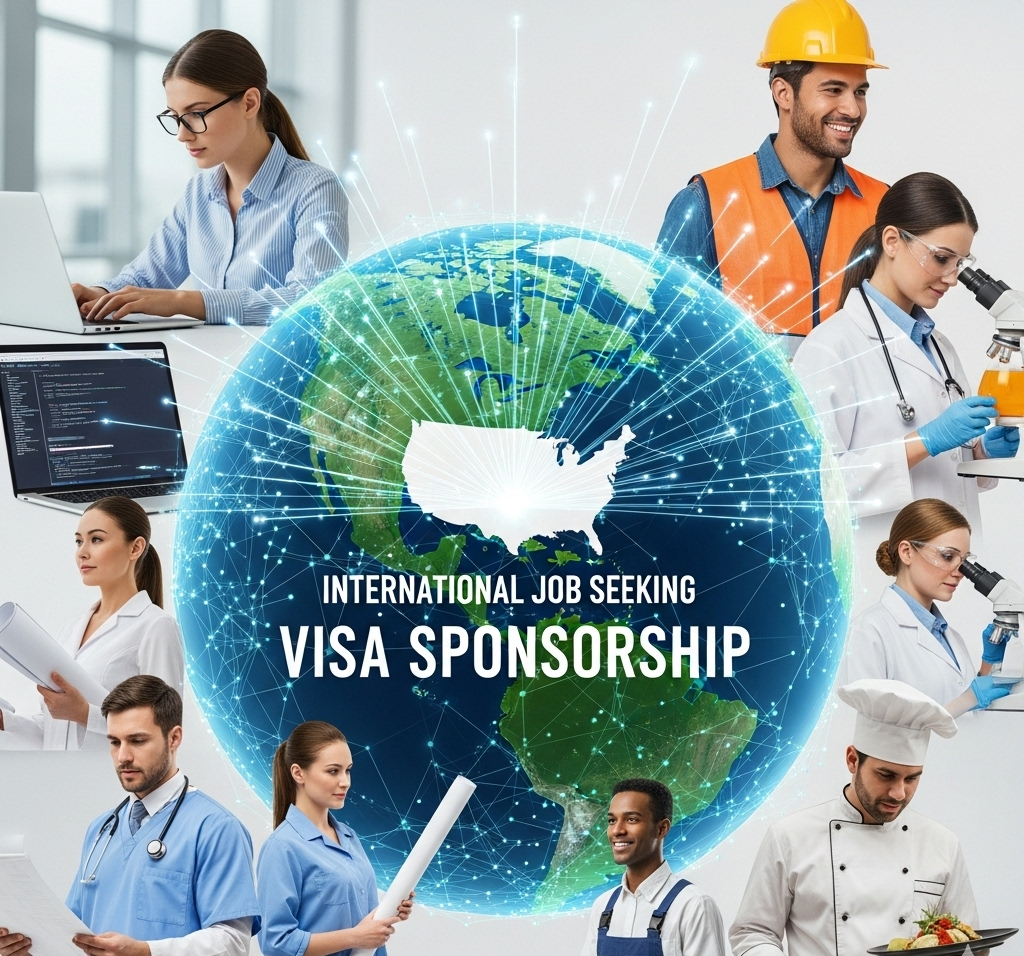Introduction: Acknowledge the challenge of finding a sponsored job and frame the article as a roadmap for foreign professionals. Emphasize that while it’s difficult, it is a very achievable goal with the right strategy and knowledge.
Section 1: Identifying High-Demand Industries and Roles
- Healthcare: Detail the chronic shortages in this sector.
- Sub-section on Registered Nurses (RNs) and the EB-3 visa path.
- Sub-section on Physicians and other healthcare professionals.
- STEM and IT: Explain the ongoing demand for tech talent.
- Sub-section on Software Engineers, Data Scientists, and Cybersecurity professionals.
- Discuss the strong link between these roles and the H-1B visa.
- Other Promising Sectors: Expand on other industries with a need for skilled foreign workers, such as finance, engineering, and renewable energy.
Section 2: Navigating the U.S. Visa Landscape for Skilled Workers
- Temporary Work Visas:
- H-1B Visa: Explain the purpose, eligibility requirements, and the lottery system. Provide context on the annual cap and how it affects applicants.
- L-1 Visa: Briefly mention this for intracompany transferees, as it’s a common path for those already with an international company.
- O-1 Visa: Describe this for “extraordinary ability” individuals and how it differs from the H-1B.
- Permanent (Green Card) Visas:
- EB-2 & EB-3 Visas: Provide a detailed breakdown of these two crucial visa categories. Explain the differences in eligibility (advanced degree vs. bachelor’s degree/skilled worker).
- The PERM Labor Certification Process: Dedicate a significant portion to this, as it’s a mandatory and often complex step for most EB-2/EB-3 petitions. Explain why it’s necessary and what it entails for the employer.
Section 3: The Strategic Job Search: Tools and Tactics
- Optimizing Your Search: Provide practical advice on how to use job boards and other resources effectively.
- List specific platforms (e.g., LinkedIn, Indeed, Glassdoor) and how to filter for “visa sponsorship.”
- Suggest using keywords like “H-1B sponsorship,” “green card sponsorship,” and “willing to sponsor.”
- Networking: Stress the importance of networking on platforms like LinkedIn. Advise on how to connect with recruiters and professionals at companies known for sponsorship.
- Company Research: Explain how to identify “H-1B friendly” companies. Suggest searching for past H-1B petitions through public databases to find a list of historical sponsors.
Section 4: Crafting a U.S. Standard Resume and Cover Letter
- Resume Formatting: Detail the key differences between a U.S. resume and international CVs (e.g., no photo, no personal information like marital status).
- Highlighting Accomplishments: Advise on the importance of quantifying achievements rather than just listing responsibilities.
- The Cover Letter: Explain the role of the cover letter in a U.S. job application. Advise on how to proactively and professionally mention the need for sponsorship.
Section 5: Post-Offer and Visa Application Process
- Working with an Immigration Attorney: Explain why this is a critical step for both the applicant and the employer.
- Required Documentation: List the common documents needed for visa petitions (e.g., diplomas, transcripts, letters of experience).
- Common Pitfalls and How to Avoid Them: Touch upon issues like RFE (Request for Evidence) and the importance of a well-prepared application.
Conclusion: Summarize the key takeaways and provide a message of encouragement, reinforcing that with diligent research and a strategic approach, a sponsored job in the U.S. is within reach.

Leave a Reply